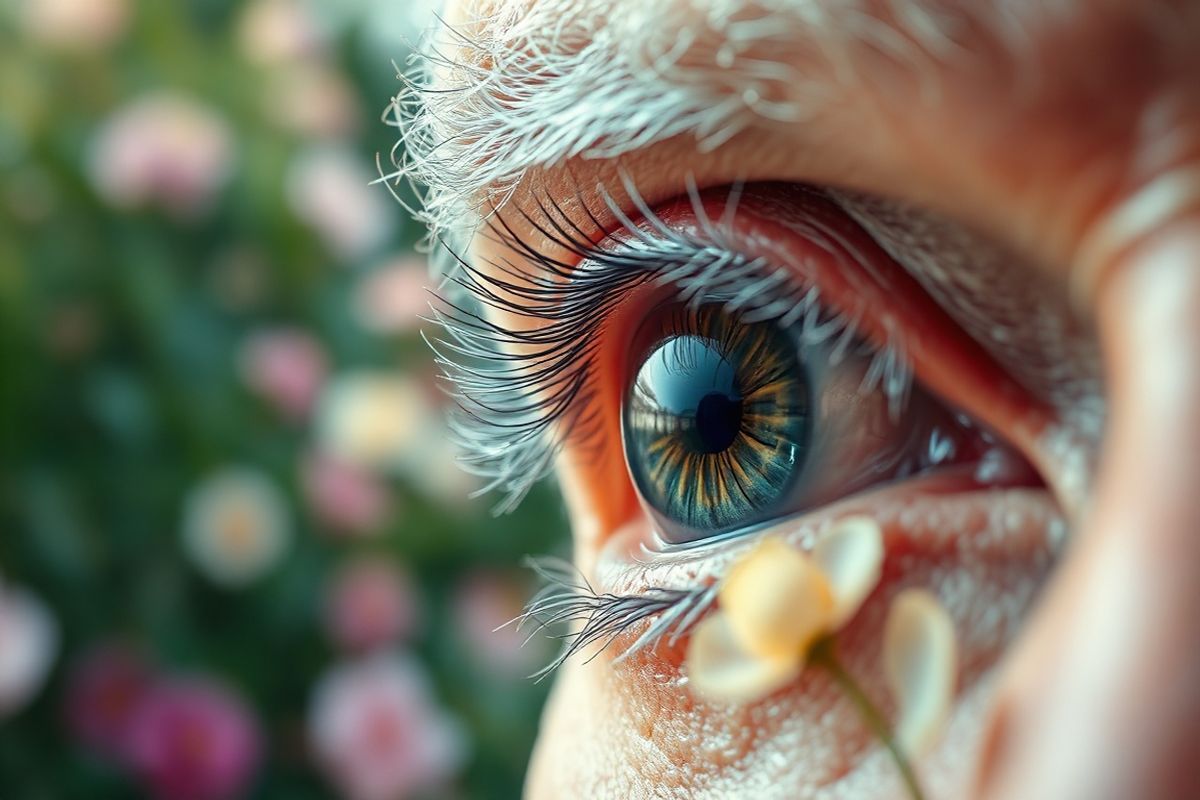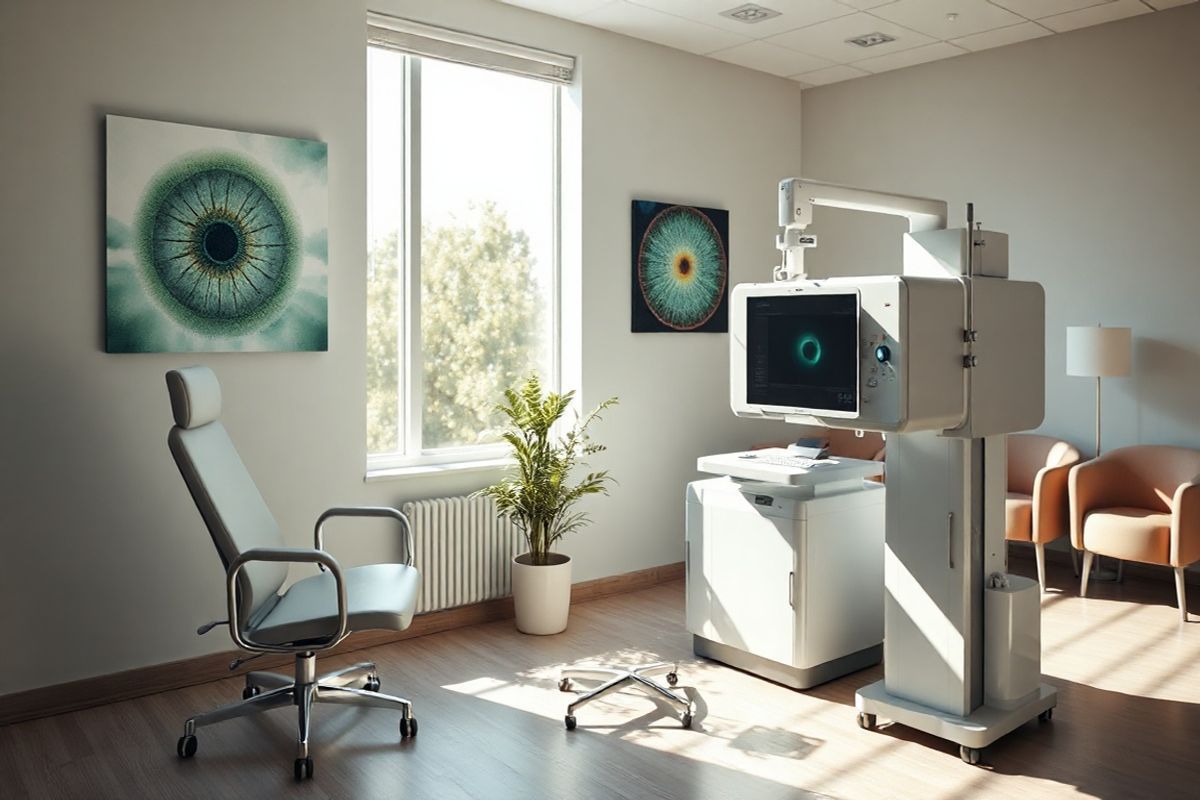Table of Contents
What is Macular Degeneration? An Overview of AMD and Its Impact on Vision

Age-related macular degeneration (AMD) is a progressive eye disease that primarily affects individuals aged 50 and older. It is one of the leading causes of severe vision loss among older adults in the United States, with the Centers for Disease Control and Prevention estimating that approximately 1.8 million Americans are affected by AMD, and another 7.3 million are at substantial risk for vision loss from this condition (American Optometric Association, n.d.). AMD impacts the macula—the small central area of the retina responsible for detailed vision—leading to a gradual decline in central vision essential for tasks such as reading and driving.
There are two primary forms of AMD: dry (atrophic) and wet (exudative). Dry AMD, which accounts for about 80% of cases, involves the gradual breakdown of light-sensitive cells in the macula, leading to a slow and progressive loss of vision. Early symptoms often include blurred vision or the distortion of straight lines (American Academy of Ophthalmology, n.d.). Wet AMD, though less common, is characterized by the growth of abnormal blood vessels beneath the retina, which can leak fluid and blood, causing rapid damage to the macula and more severe vision loss. Regular comprehensive eye exams are crucial for early detection, as treatment can slow progression but cannot restore lost vision (National Eye Institute, n.d.).
Types of Age-Related Macular Degeneration
- Dry AMD: Involves the gradual thinning of the macular tissue. Patients may notice a gradual loss of central vision, and straight lines may appear wavy.
- Wet AMD: Involves the growth of abnormal blood vessels that leak fluid into the macula, leading to faster vision loss. Early detection is essential for effective treatment.
Risk Factors for AMD
- Age: The risk increases significantly after age 50.
- Genetics: Family history of AMD can increase susceptibility.
- Race: Caucasians are at higher risk compared to other races.
- Lifestyle Factors: Smoking, lack of physical activity, poor diet, and high blood pressure can contribute to the development of AMD.
Exploring Macular Pucker: Causes, Symptoms, and Diagnosis

A macular pucker, also known as an epiretinal membrane, is a condition characterized by the formation of scar tissue on the retina’s surface. This scar tissue can cause the retina to wrinkle or pucker, leading to visual distortions (Cleveland Clinic, n.d.). Unlike AMD, which primarily affects the photoreceptor cells, macular pucker affects the retina’s surface and can lead to changes in vision such as blurriness or distortion of straight lines.
Causes of Macular Pucker
The causes of macular pucker often relate to aging and the natural processes of the eye. Factors contributing to the development of macular pucker include:
- Aging: As we age, the vitreous gel that fills the eye can shrink and pull away from the retina, resulting in scar formation.
- retinal Tear or Detachment: Previous retinal tears can lead to scar tissue.
- Eye Surgery: Surgeries such as cataract removal can increase the risk.
- Eye Injury: Trauma to the eye may contribute to scar tissue formation.
Symptoms of Macular Pucker
Symptoms of macular pucker can vary widely among individuals but typically include:
- Distorted central vision (e.g., straight lines appear wavy).
- Blurred vision.
- Difficulty seeing fine detail and reading small print.
- The presence of a gray area or blind spot in the central vision.
Diagnosis of Macular Pucker
Diagnosis typically involves a comprehensive eye examination, including tests to assess visual acuity and the health of the retina. Key diagnostic tools include:
- Amsler Grid Test: A simple test used to detect distortions in central vision.
- Optical Coherence Tomography (OCT): An imaging test that provides cross-sectional images of the retina, allowing for the visualization of any wrinkling or scarring.
Comparing the Symptoms: How Macular Pucker Differs from Macular Degeneration
While both macular pucker and macular degeneration affect central vision, their symptoms, causes, and outcomes are markedly different.
| Symptom/Characteristic | Macular Degeneration (AMD) | Macular Pucker |
|---|---|---|
| Vision Type Affected | Central vision (sharp detail) | Central vision (sharp detail) |
| Visual Distortion | Blurred or wavy lines | Straight lines appear wavy; blurred vision |
| Rate of Progression | Gradual (dry) or rapid (wet) | Generally stable, may worsen over time |
| Treatment Options | Supplements, injections (wet AMD); no cure for dry AMD | Surgery (vitrectomy) if severe |
| Underlying Cause | Degeneration of photoreceptors | Scar tissue formation due to vitreous shrinkage |
Treatment Options: Managing Macular Pucker and Macular Degeneration
Treatment for Macular Degeneration
While there is currently no cure for dry AMD, certain interventions may help slow its progression:
- Nutritional Supplements: Research suggests that specific vitamins and minerals may help reduce the risk of progression in dry AMD (American Academy of Ophthalmology, n.d.).
- Anti-VEGF Injections: For wet AMD, intraocular injections of anti-vascular endothelial growth factor (VEGF) medications can help reduce fluid leakage and stabilize vision.
- Lifestyle Changes: Quitting smoking, maintaining a healthy diet, and controlling blood pressure can also help reduce risk factors.
Treatment for Macular Pucker
For many individuals with macular pucker, treatment might not be necessary if symptoms are mild. However, if the visual distortion significantly impacts daily activities, surgical options may be considered:
- Vitrectomy with Membranectomy: This surgical procedure involves removing the vitreous gel and the scar tissue causing the pucker, potentially improving vision (Cleveland Clinic, n.d.).
Preventative Measures: How to Protect Your Eyes from Macular Conditions
While not all cases of macular pucker or degeneration can be prevented, certain lifestyle changes can help reduce risk. These include:
- Regular Eye Exams: Early detection is key in managing both conditions. Regular check-ups with an eye care professional can help catch changes in vision early.
- Healthy Diet: Consuming a diet rich in leafy greens, fruits, and fish high in omega-3 fatty acids can support eye health.
- Avoiding Smoking: Smoking is a significant risk factor for both AMD and macular pucker.
- Protective Eyewear: Wearing sunglasses that block UV rays can help protect the eyes from damage.
FAQ Section
Q: Are macular pucker and macular degeneration the same condition?
A: No, they are different conditions. Macular degeneration primarily affects the photoreceptor cells in the macula, while a macular pucker involves scar tissue on the retina’s surface.
Q: Can macular pucker cause blindness?
A: While macular pucker can lead to significant vision distortion, it rarely causes complete blindness, as peripheral vision typically remains intact.
Q: How is macular degeneration diagnosed?
A: Diagnosis typically involves a comprehensive eye examination, including visual acuity tests and imaging techniques like optical coherence tomography (OCT).
Q: What are the main risk factors for macular degeneration?
A: Risk factors include age, family history, smoking, obesity, and high blood pressure.
Q: Is there a cure for macular degeneration?
A: There is currently no cure for dry AMD, but treatments are available to slow its progression. Wet AMD may respond to anti-VEGF injections.
References
- American Academy of Ophthalmology. (n.d.). Age-related macular degeneration
- American Optometric Association. (n.d.). Macular degeneration. Retrieved from https://www.aoa.org/healthy-eyes/eye-and-vision-conditions/macular-degeneration
- Cleveland Clinic. (n.d.). Macular pucker: What it is, symptoms & treatment. Retrieved from https://my.clevelandclinic.org/health/diseases/14207-macular-pucker
- National Eye Institute. (n.d.). Age-related macular degeneration (AMD). Retrieved from https://medlineplus.gov/maculardegeneration.html










